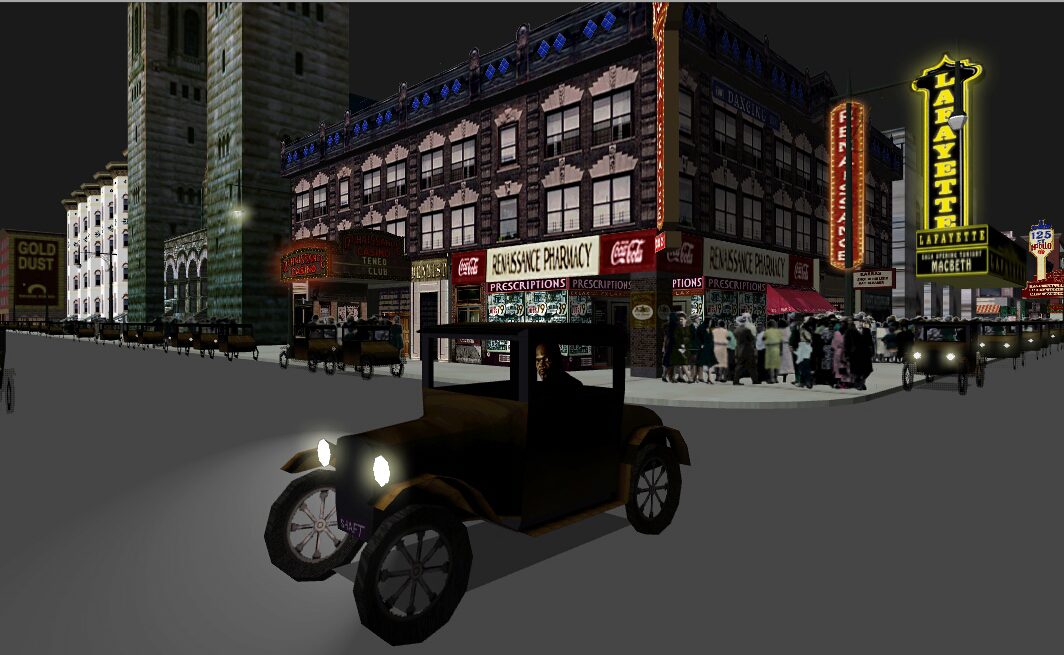Virtual Harlem Lives On
August 23rd, 2015
Categories: Education, User Groups, VR, VR Art

About
The Electronic Visualization Laboratory (EVL) at University of Illinois at Chicago was an early participant in the project “Virtual Harlem,” conceived in 1997 by Bryan Carter as he began his PhD dissertation work at the University of Missouri-Columbia, making it one of the earliest virtual reality environments, especially for the humanities.
Carter started Virtual Harlem as a way to better engage his students, who were studying African-American literature. Immersing themselves in the literature - such as walking by the Cotton Club and hearing Ethel Waters singing “Stormy Weather” from within - helped with that engagement. A secondary benefit was that it preserved the cultural heritage of Harlem's 1920s Jazz Age neighborhood.
Starting in 1998, Carter worked with Jason Leigh, Andy Johnson and students at EVL, as well as faculty and students from UIC’s African American Studies, English Literature, Pedagogy, and Communications departments, to port to EVL’s CAVE virtual environment. For UIC researchers, “Virtual Harlem” was a means by which to study how virtual reality could be best used as an educational tool, both locally and over distance, and to improve the quality of virtual-reality tools and techniques to better bring this, and other, virtual worlds to life. The “Virtual Harlem Project” was well documented on the EVL website
Carter got his PhD, worked at Central Missouri State University, and is now an Assistant Professor of Africana Studies at the University of Arizona, specializing in African American literature of the 20th Century, with a primary focus on the Harlem Renaissance and a secondary emphasis on digital culture. Virtual Harlem evolved too, and over time was transformed to run in Second Life and OpenSim, and soon on the Virtual World Web.
Recently, the story “Virtually Visiting the Harlem Renaissance” appeared in the newsletter Hyperallergic, which profiles art and culture in the world today. The August 18, 2015 article by Allison Meier bemoans the recent demolition of Harlem’s Renaissance Ballroom. Though a piece of Harlem’s historic neighborhood is now gone, it is preserved in Bryan Carter’s Virtual Harlem. The article credits EVL’s CAVE, where the first iteration of Virtual Harlem began.
Virtual Harlem was also featured in The Drax Files Radio Hour, posted September 12, 2014. The website has a podcast interview with Carter, video about Virtual Harlem, and also recognizes that EVL’s CAVE and ImmersaDesk were originally used to showcase this historic American neighborhood.
More information on Bryan Carter.
EVL will reach out to Bryan Carter - perhaps it is time to see Virtual Harlem in EVL’s CAVE2 hybrid reality environment.
CAVE and CAVE2 are trademarks of the University of Illinois Board of Trustees.